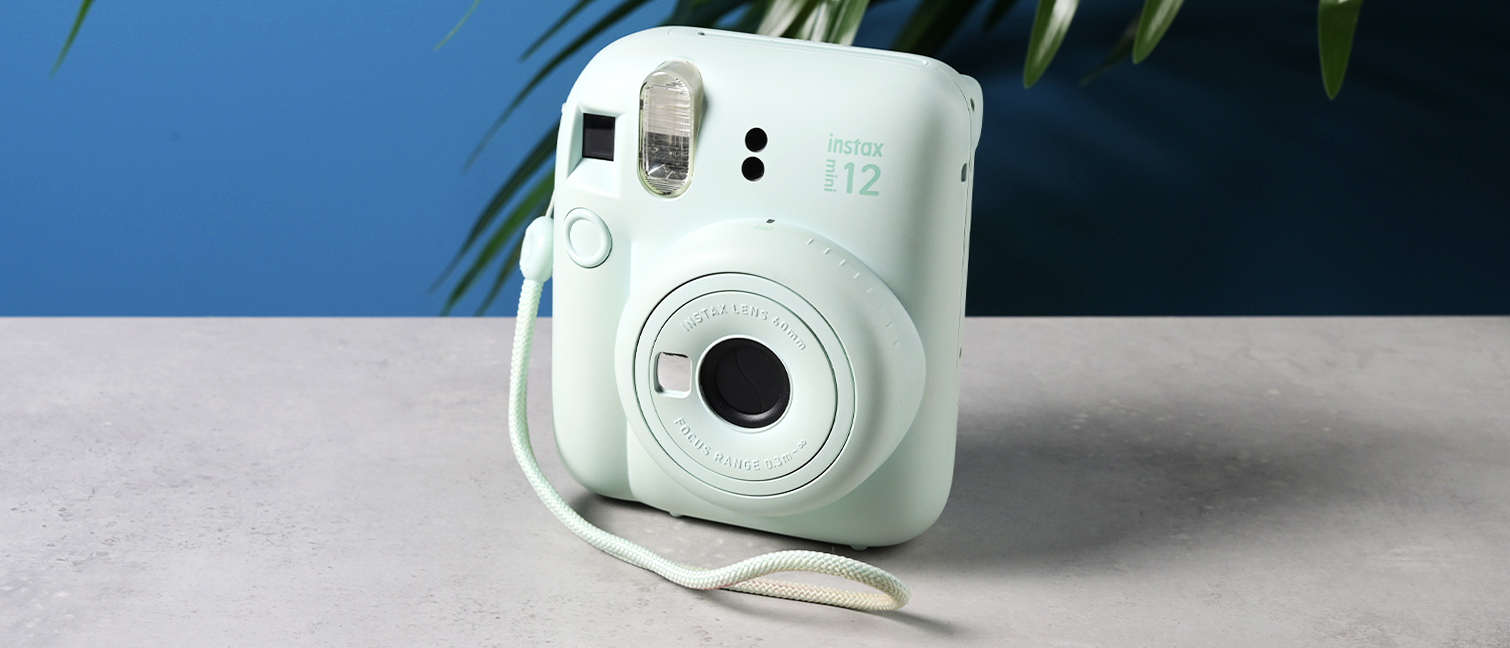Tom's Guide Verdict
The Fujifilm Instax mini 12 is an extremely easy-to-use instant camera that takes bright and detailed photos, even in low light. It comes with a handy app to scan and share your prints, a selfie mirror and a close-up mode for more versatile shots. But shots taken in very bright light may be over exposed, and the camera doesn’t have a creative double exposure mode.
Pros
- +
Extremely easy to use
- +
Stellar print quality
- +
Useful app to scan prints
- +
Fantastic value for money
- +
Selfie mirror and close-up mode
Cons
- -
No double exposures or self-timer
- -
Shots in very bright light may be over exposed
Why you can trust Tom's Guide
Looking for one of the best instant cameras but don’t want to get bogged down with the technical side of photography? The Fujifilm Instax mini 12 might be the one for you — and it might be my new favorite instant camera.
The Instax mini 12 is great for beginners thanks to the easy controls and automatic shutter speed, exposure and flash adjustments, and it’s excellent for travelers wanting to capture memories. It comes with a user-friendly app to quickly scan and share your prints on social media. The prints turn out bright and detailed, and the camera comes with a handy selfie mirror. It even takes great photos in dimly lit environments. What’s not to love?
For the complete breakdown, read my full Fujifilm Instax mini 12 review.
Fujifilm Instax mini 12 review: Specs
| Specs | Fujifilm Instax mini 12 |
|---|---|
| Price | $79 / £79 |
| Lens | 60mm retractable lens |
| Viewfinder | 0.37x |
| Exposure control | Automatic, Lv 5 to 14.5 (ISO 800) |
| Shutter | 1/2 to 1/250 seconds |
| Aperture | Not specified |
| Flash | Automatic |
| Flash refresh time | Up to 7 seconds |
| Flash range | 0.3-2.2m |
| Self-timer | No |
| Power | 2 x AA batteries |
| Dimensions | 4.8 x 4.09 x 2.62 inches |
| Weight | 10.79 ounces |
| Film used | Instax mini film |
| Film development time | Up to 90 seconds |
| Cost per print | 75¢ |
Fujifilm Instax mini 12 review: Cheat sheet
- What is it? A highly portable instant camera that uses mini film
- Who is it for? For everyone and anyone who wants to capture memories in physical prints
- How much does it cost? The Fujifilm Instax mini 12 is available for $79 / £79
- What do we like? The ease of use, stellar print quality, useful app to scan prints, great battery life, the cute aesthetic, and the fact that it’s excellent value for money
- What don’t we like? There are no double exposures and no self-timer, and shots in very bright light may be over exposed
Fujifilm Instax mini 12 review: Price & availability
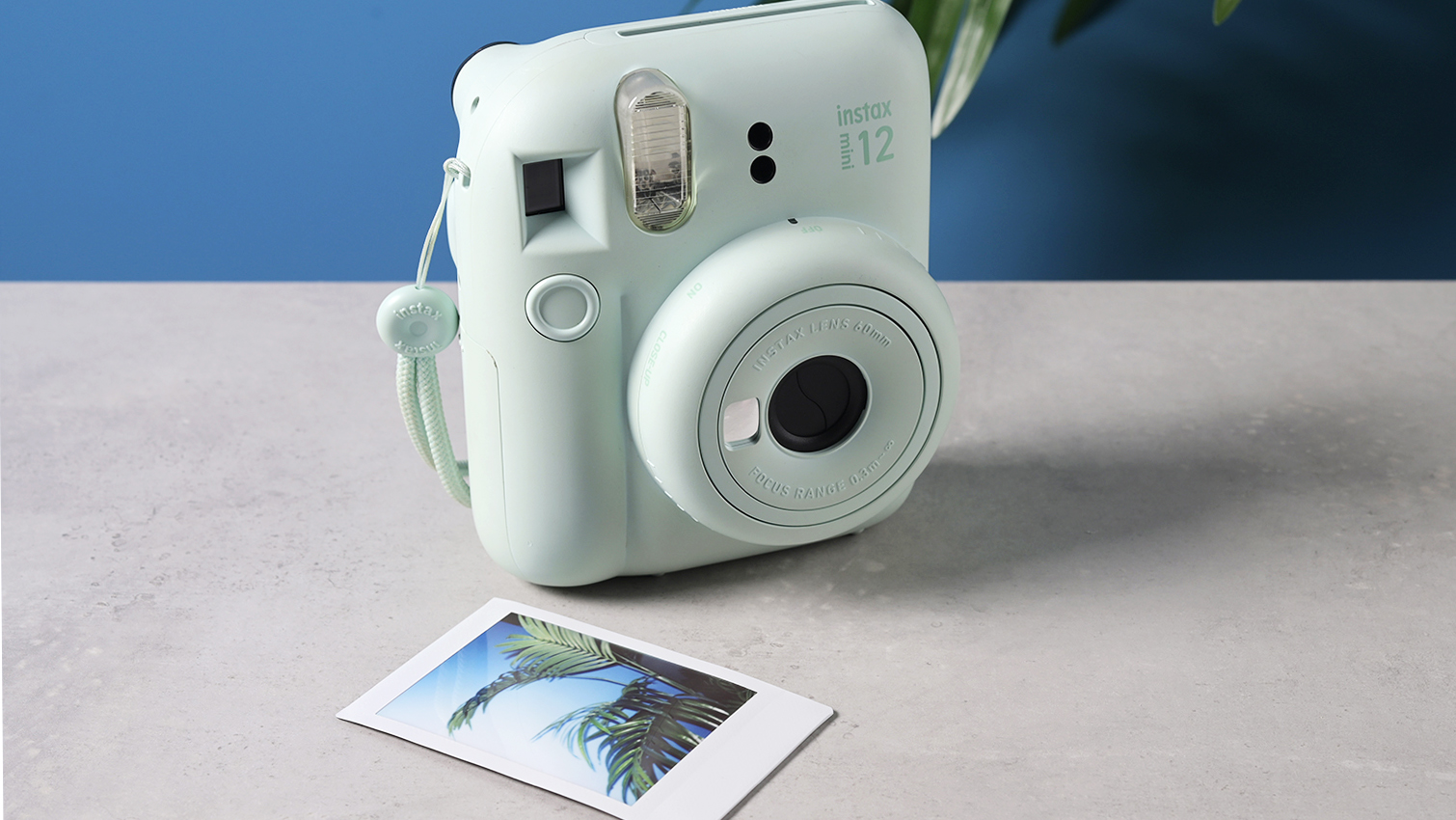
The Fujifilm Instax mini 12 succeeds the Instax mini 11, and is available in an array of fun colors: lilac purple, blossom pink, clay white, mint green, and pastel blue. It’s one of Fujifilm’s cheapest instant cameras, with a retail price of $79 / £79. You can also get the camera as a bundle which includes 60 films, a carrying case, photo album and stickers, for $159 / £114.
This cute little camera finds itself competing against the likes of the Polaroid Go Gen 2 ($79) and the Kodak Mini Shot 2 Retro ($159 for the bundle).
Fujifilm Instax mini 12 review: Design & build quality
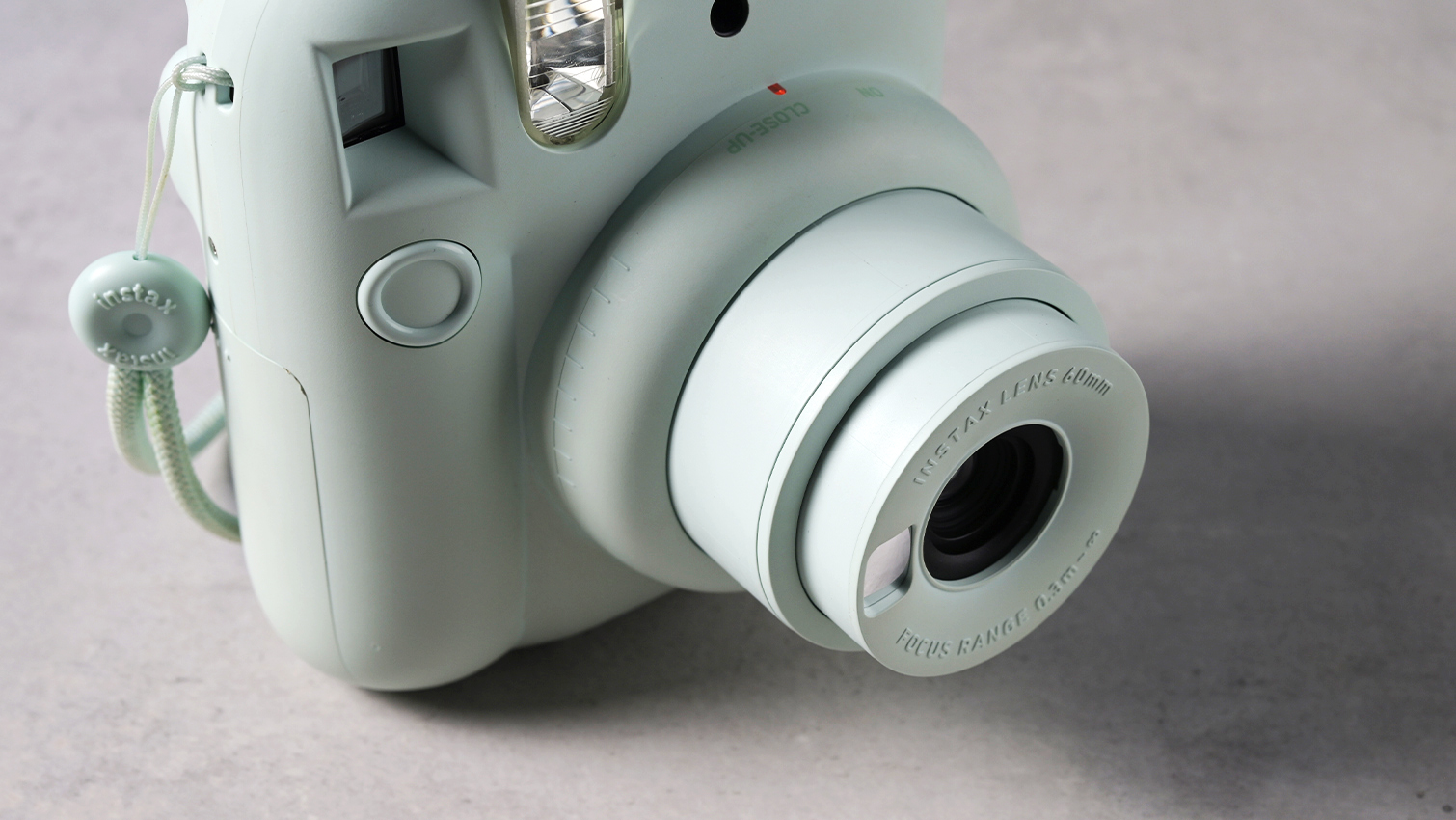
The Fujifilm Instax mini 12 retains much of its predecessor’s design but has a curvier body for better handling. A twistable barrel has been added, which is used to extend the lens and power up the Instax mini 12 — this replaces the Instax mini 11’s physical power button.
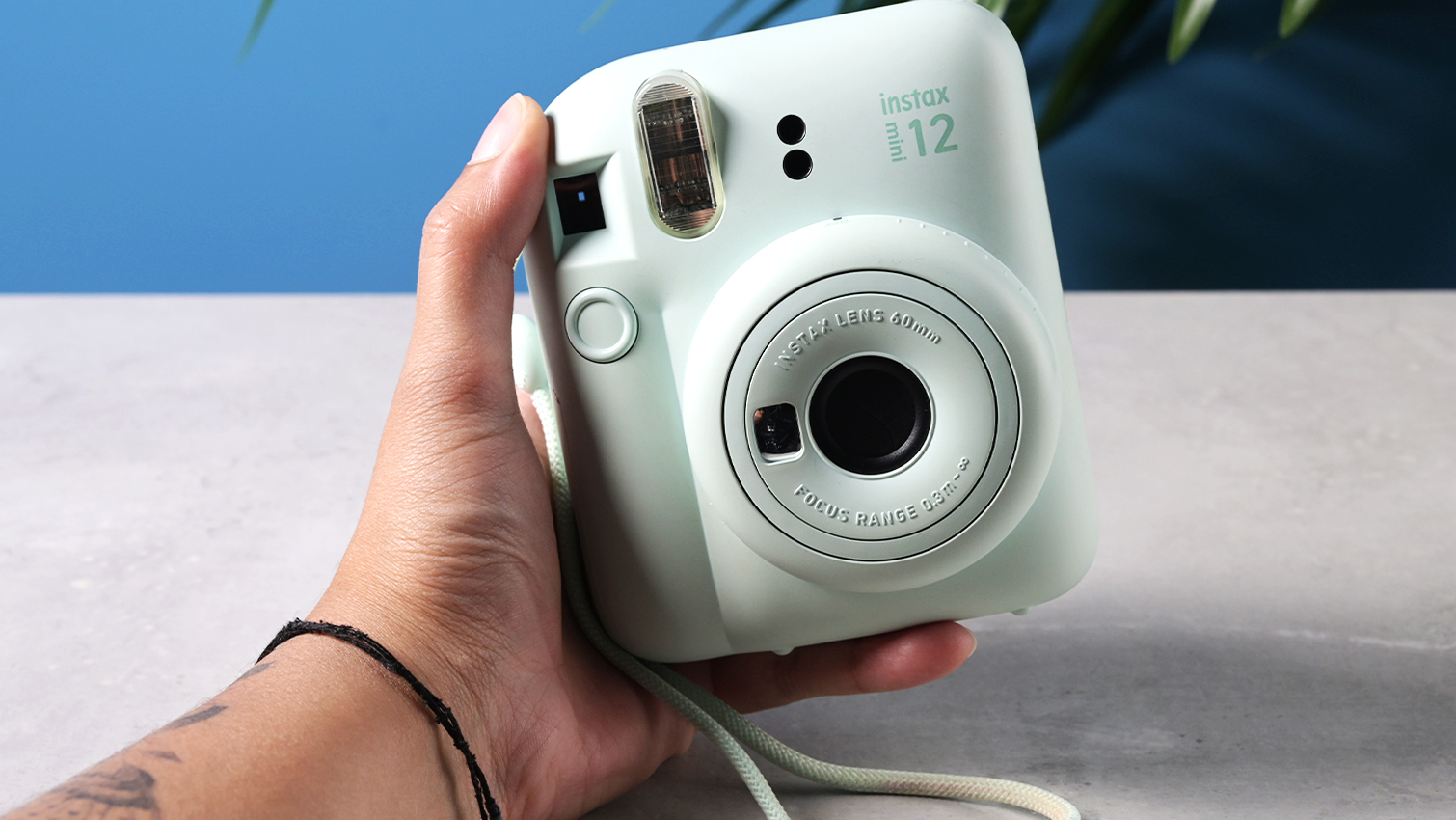
The Instax mini 12 is also slightly heavier than its predecessor, but it’s so negligible that you won’t notice it. The new camera weighs 10.79 ounces and measures 4.8 x 4.09 x 2.62 inches. Minimalistically designed, the mint green model I tested looks lovely.
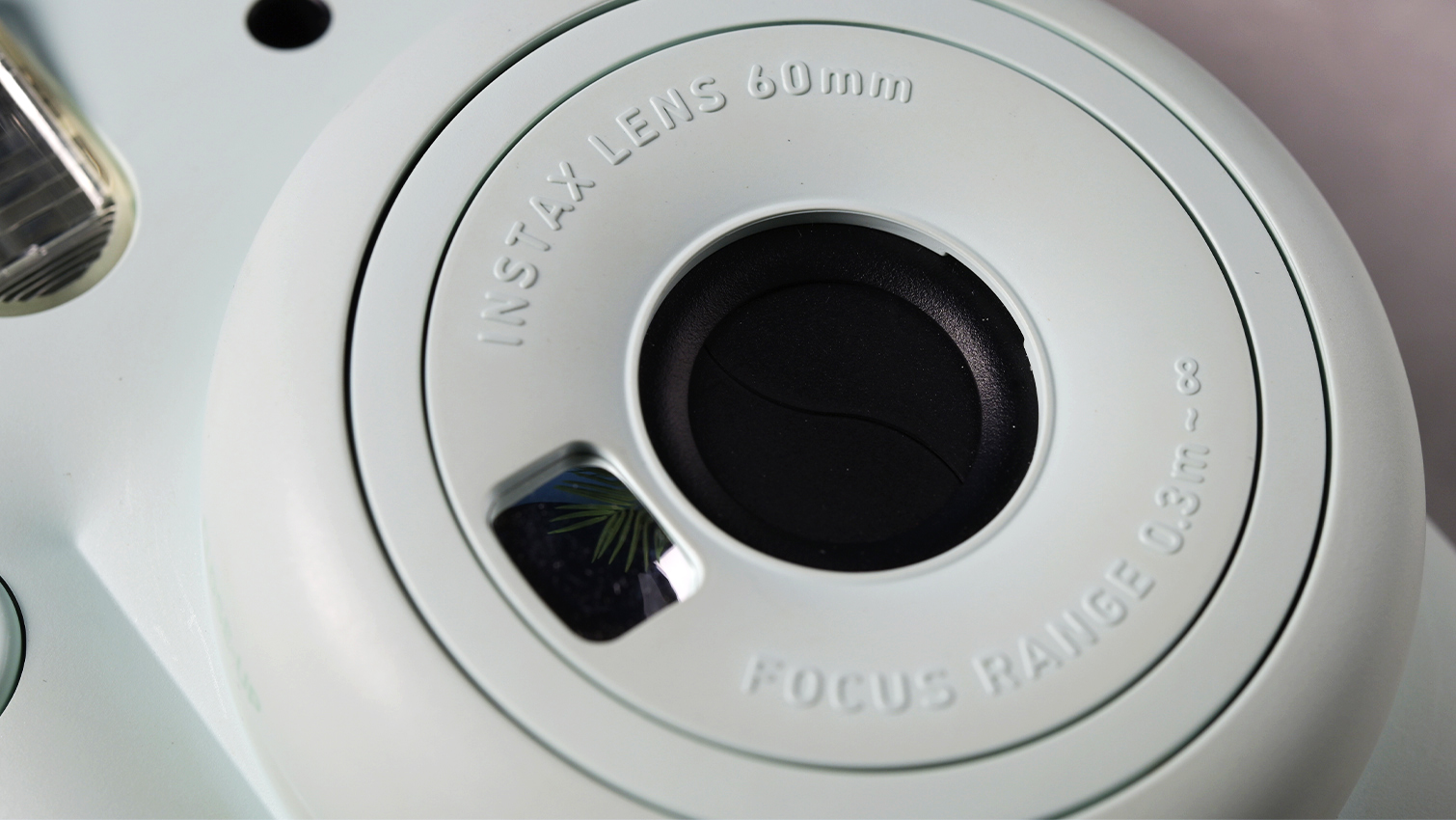
Even though the camera is made of plastic, it doesn’t feel or look cheap. It is a little slippery though, and I much prefer how the Polaroid Go Gen 2 feels, as I never had to worry about dropping it. A handy selfie mirror is located on the lens.
Fujifilm Instax mini 12 review: Lens & viewfinder
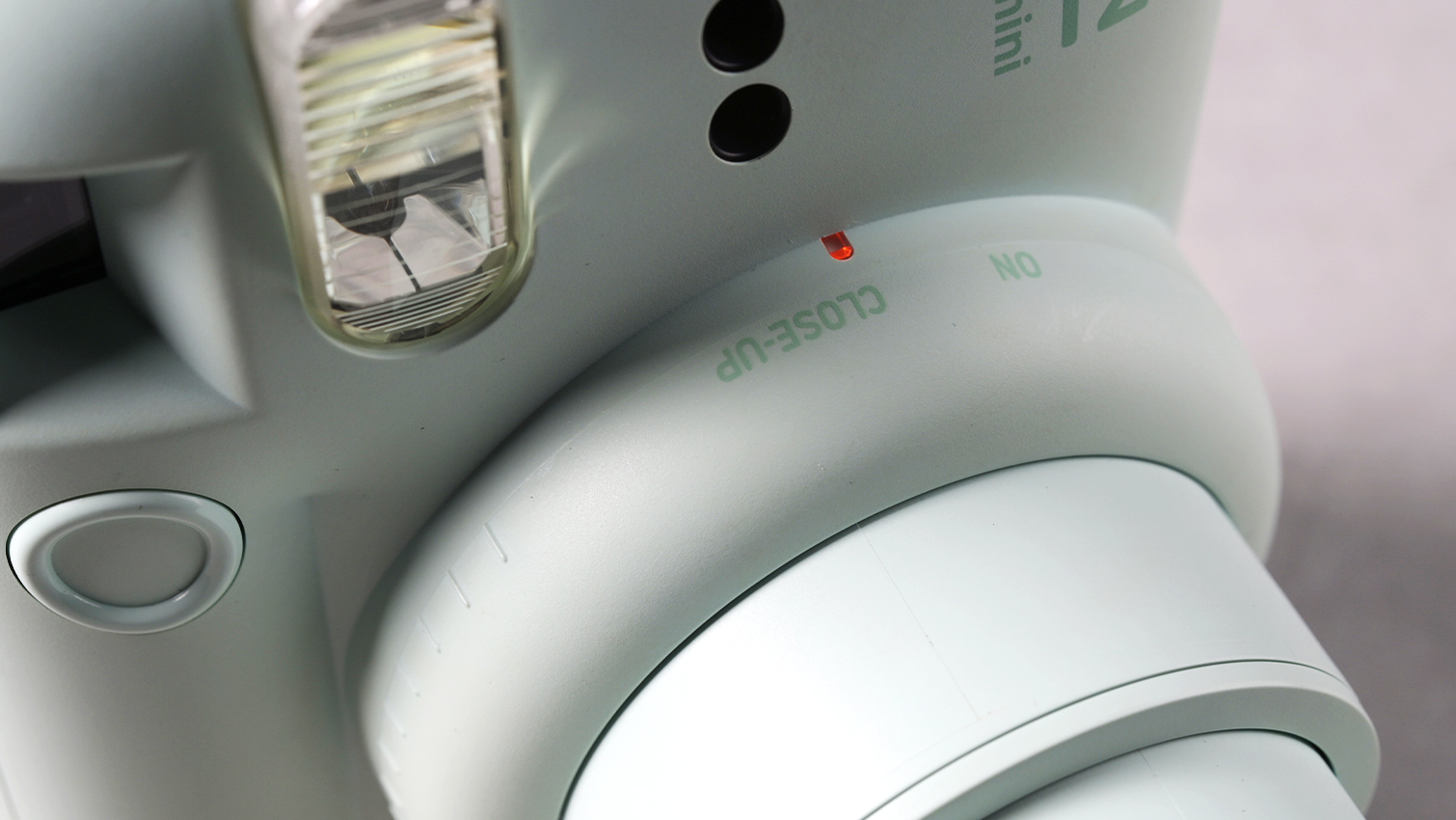
Here’s the techy bit. The Fujifilm Instax mini 12 is equipped with a retractable lens which has a focal length of 60mm. This means that it’s neither too wide nor telephoto, giving you a versatile standard field of view. With a focus range of 0.3m-∞, twisting the lens allows you to choose between a standard and close-up mode. Once you’ve decided which setting you want, simply look through the 0.37x viewfinder and shoot.
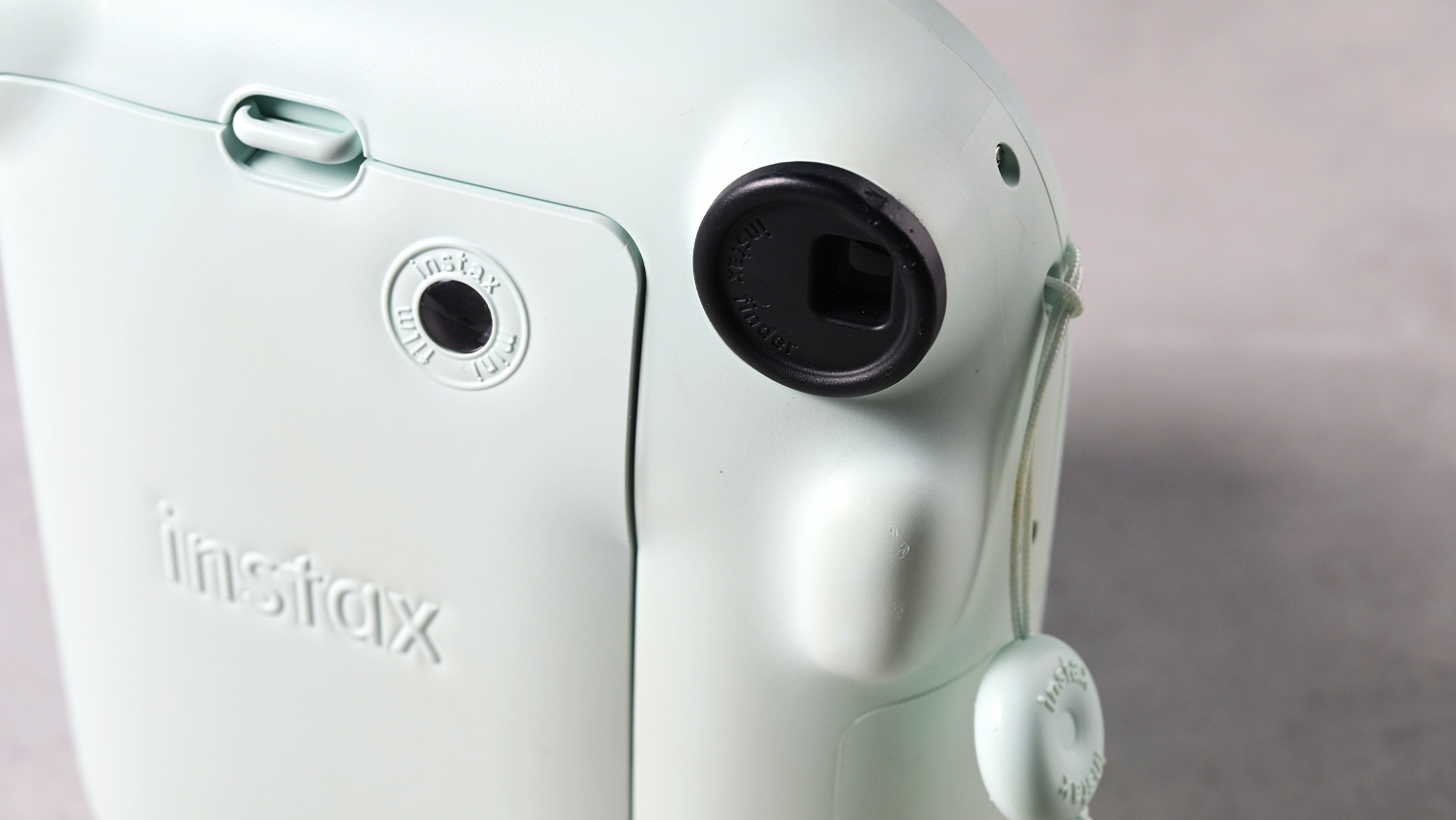
The viewfinder is very small but I didn’t have any trouble looking through it, even while wearing glasses.
The Instax mini 12’s aperture range isn’t specified but in my testing, the camera performed really well in bright conditions and decently in low-light conditions. The camera has a shutter speed of 1/2 to 1/250 seconds and it’s adjusted automatically. This is the same shutter speed as the Instax mini 11.
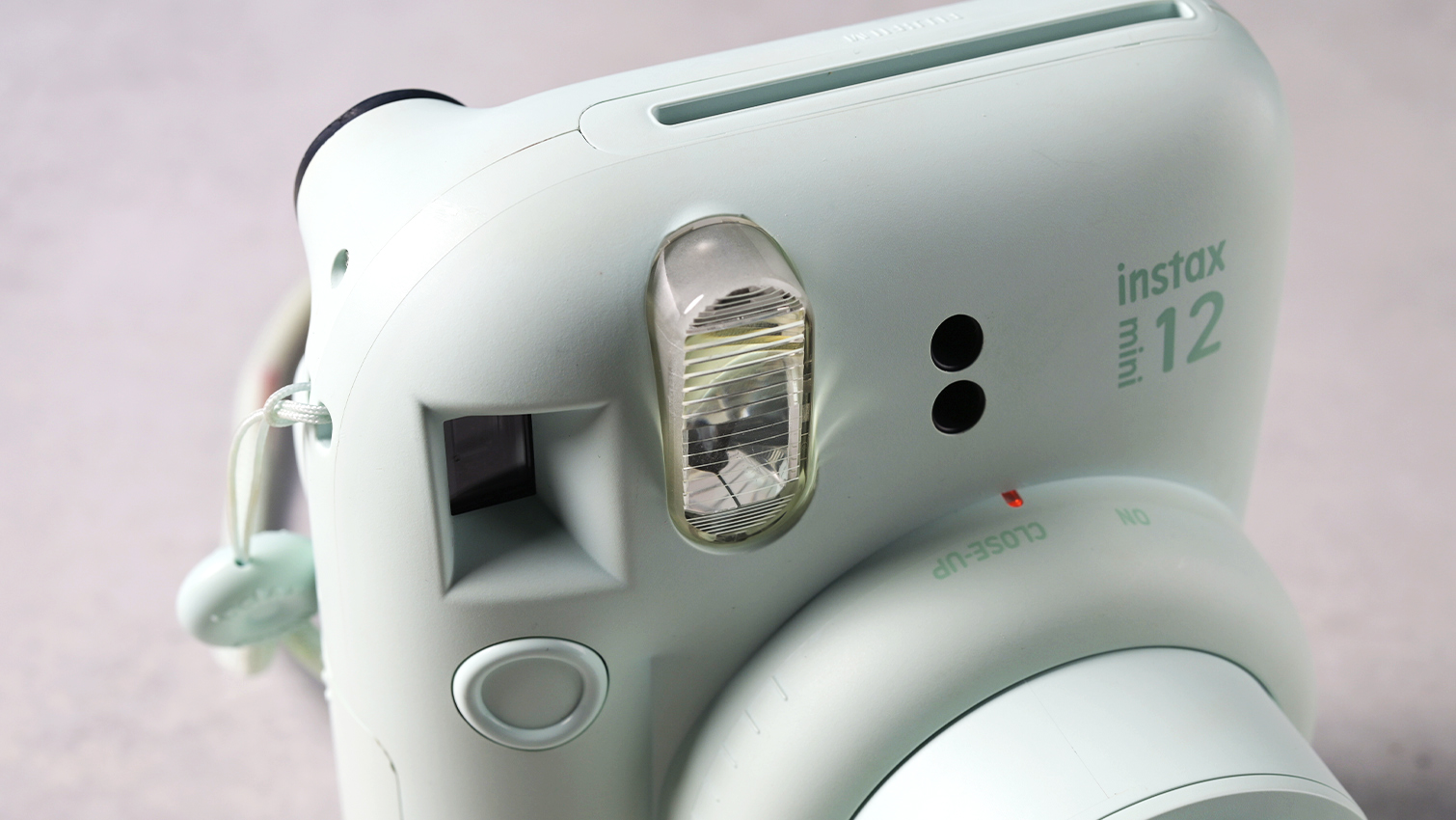
Adding to its ease of use is automatic exposure control and flash. The flash has a range of 0.3-2.2m which should satisfy most casual instant camera users. In a nutshell, you don’t need to worry about adjusting any technical settings, which means that the Instax mini 12 can be used by anyone.
Fujifilm Instax mini 12 review: Controls
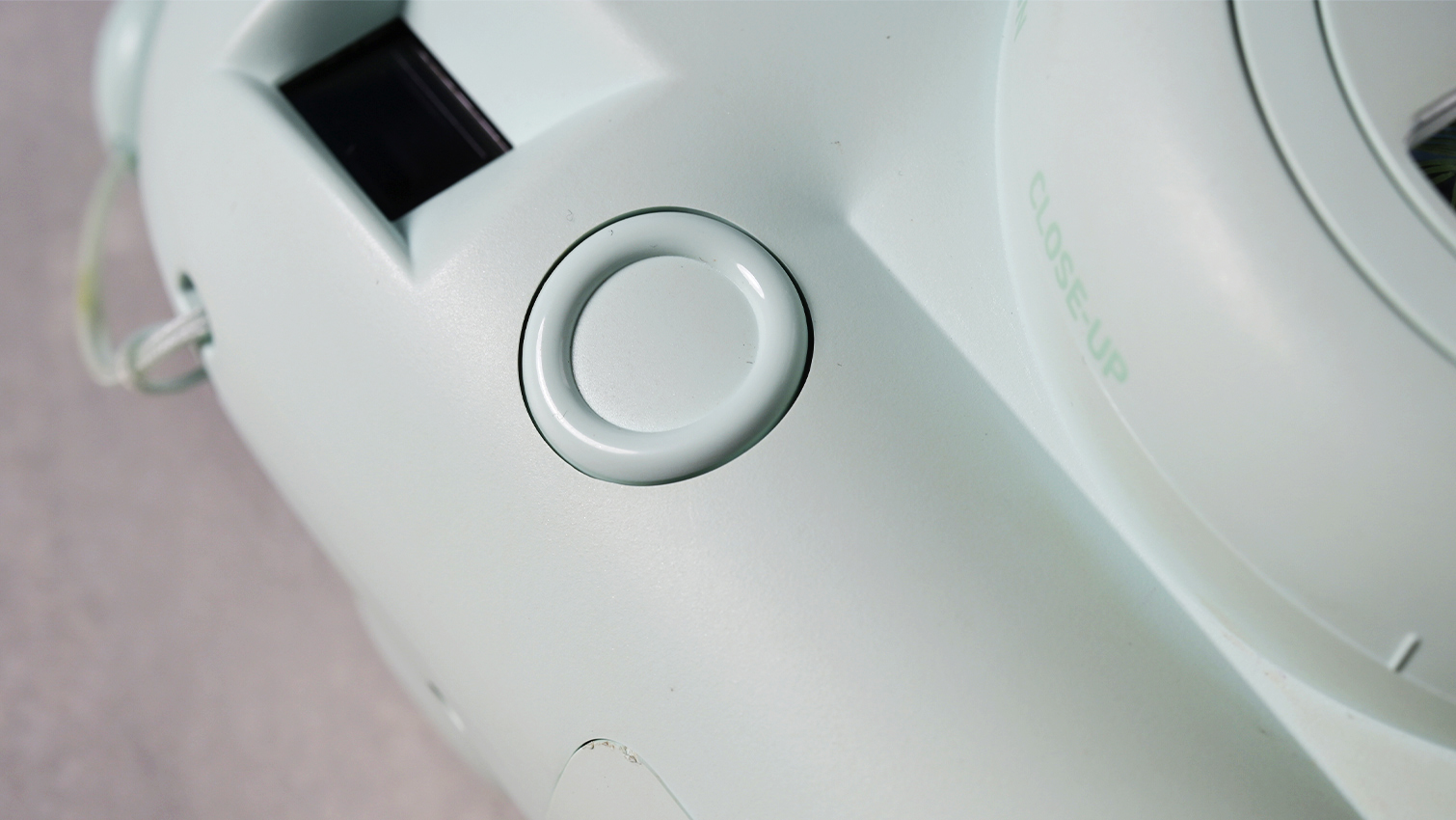
Much like many of the instant cameras I’ve tested, the Fujifilm Instax mini 12 doesn’t have a lot going on in terms of controls. It’s designed to be held with your right hand cupping the right side, and your index finger falling on the shutter button next to the lens. I felt comfortable holding the camera with one hand, thanks to its lightweight body. The shutter button has a nice tactile feel to it when pressed.
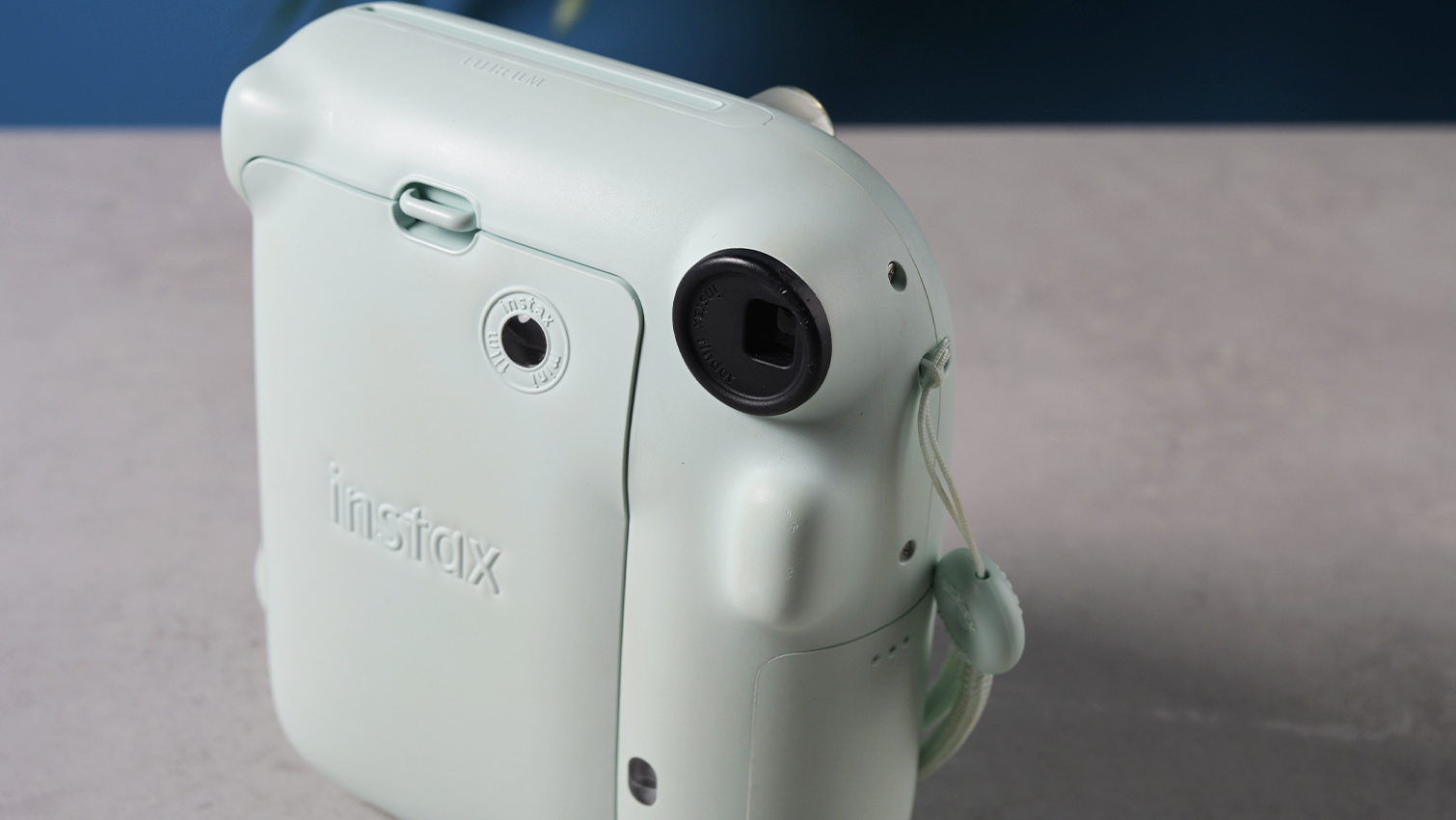
On the back of the camera, you’ll find the viewfinder and film compartment. Next to the film compartment is a handy screen which displays how many shots you have left.
Since the Instax mini 12 houses just one physical button, it doesn’t feature a self-timer or a double exposure mode like the Polaroid Go Gen 2.
Fujifilm Instax mini 12 review: Image & print quality
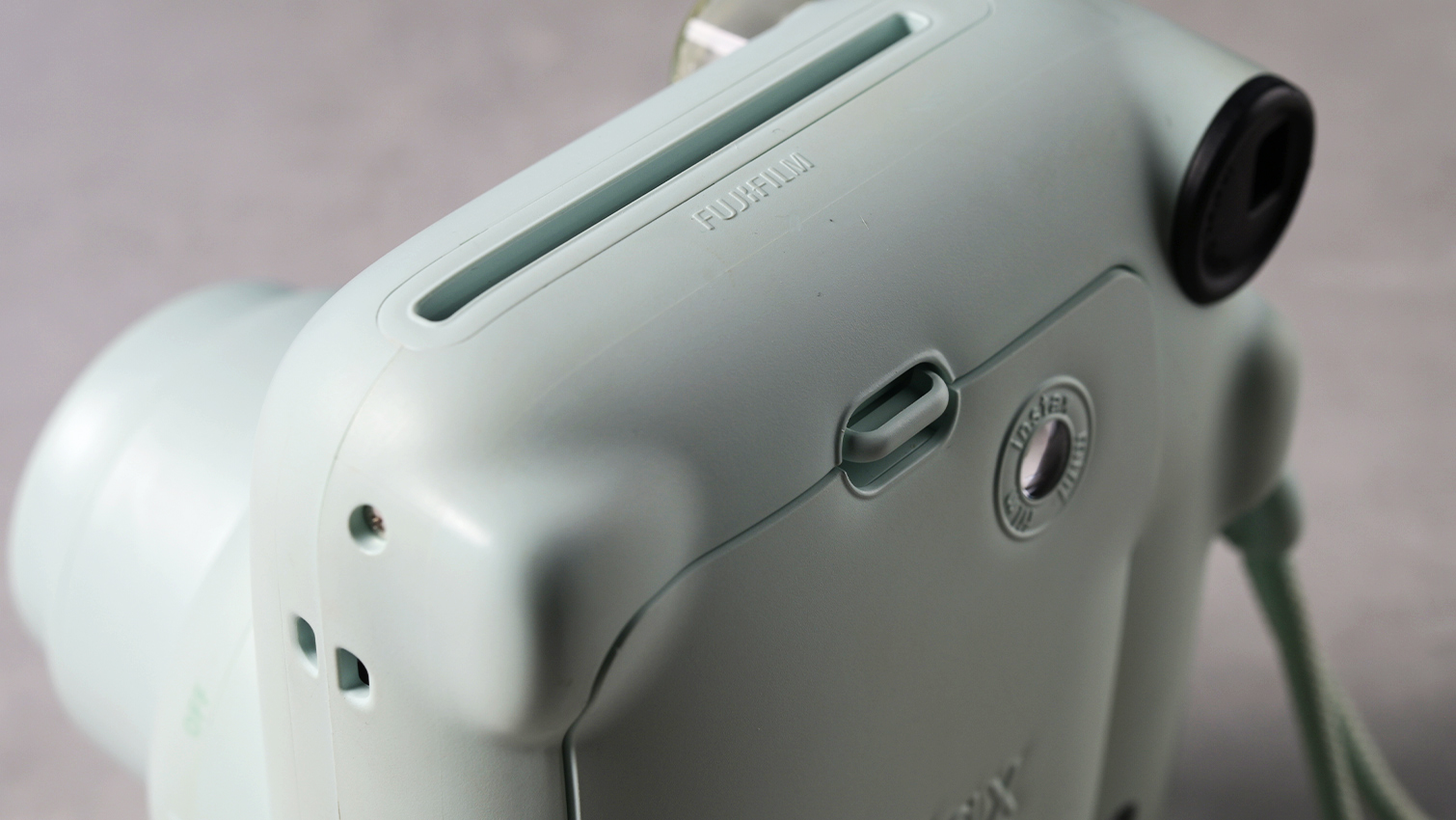
We’re on to the all-important question: what do the Fujifilm Instax mini 12’s prints look like? In one word: gorgeous. All photos were taken on a (rare) sunny day in Bath in the U.K.
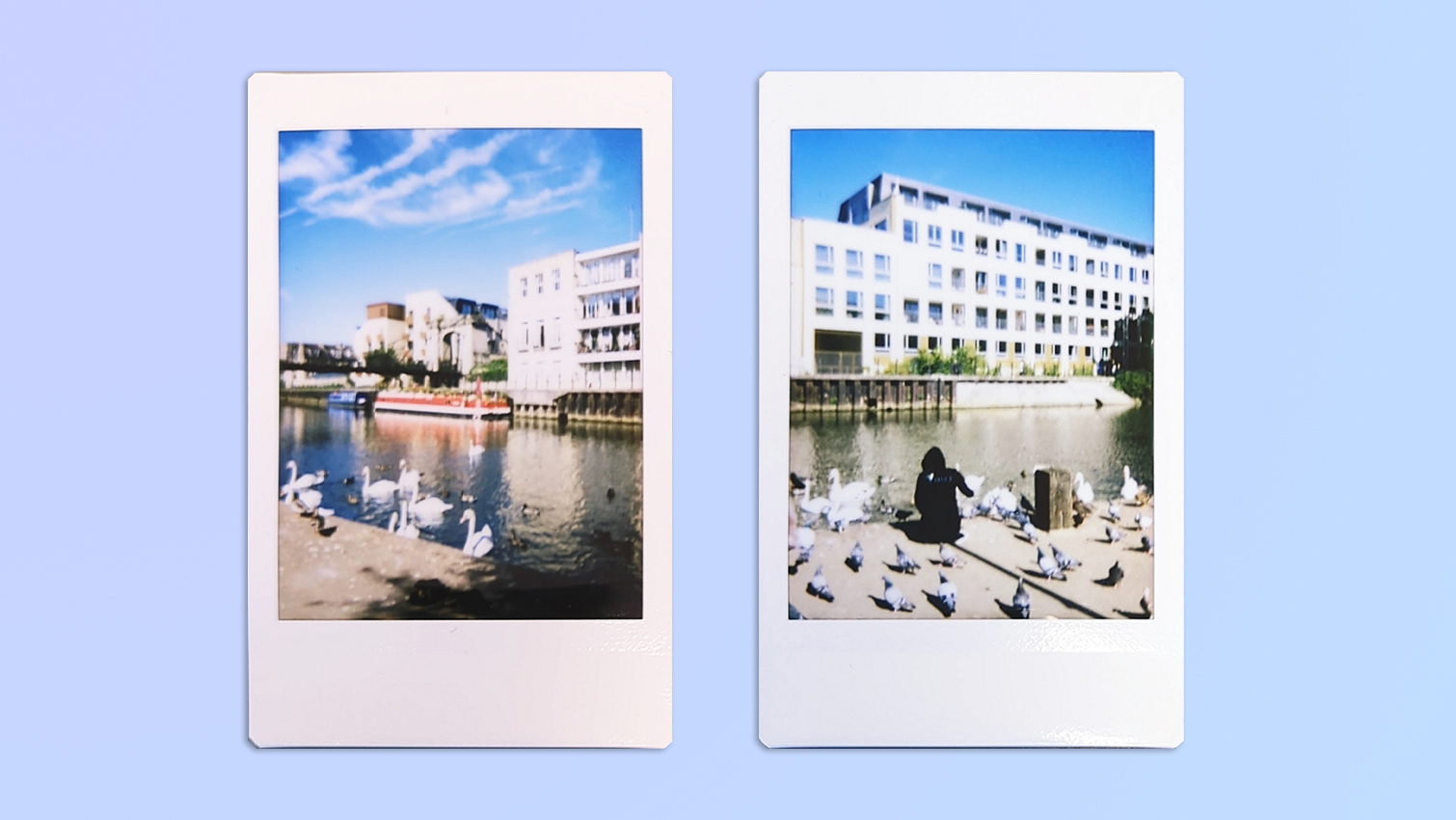
I love how faithfully the Instax mini 12 reproduces colors. In the first photo above, the camera has captured the reflections in the water really well, and the streaks of clouds in the sky look great. The swans and ducks are easily distinguishable too. Similarly, the second photo has turned out just as well, and I love the composition. It’s difficult to add a lot of context to a scene as mini film is, well, mini, but there’s enough context in the image to paint a picture.
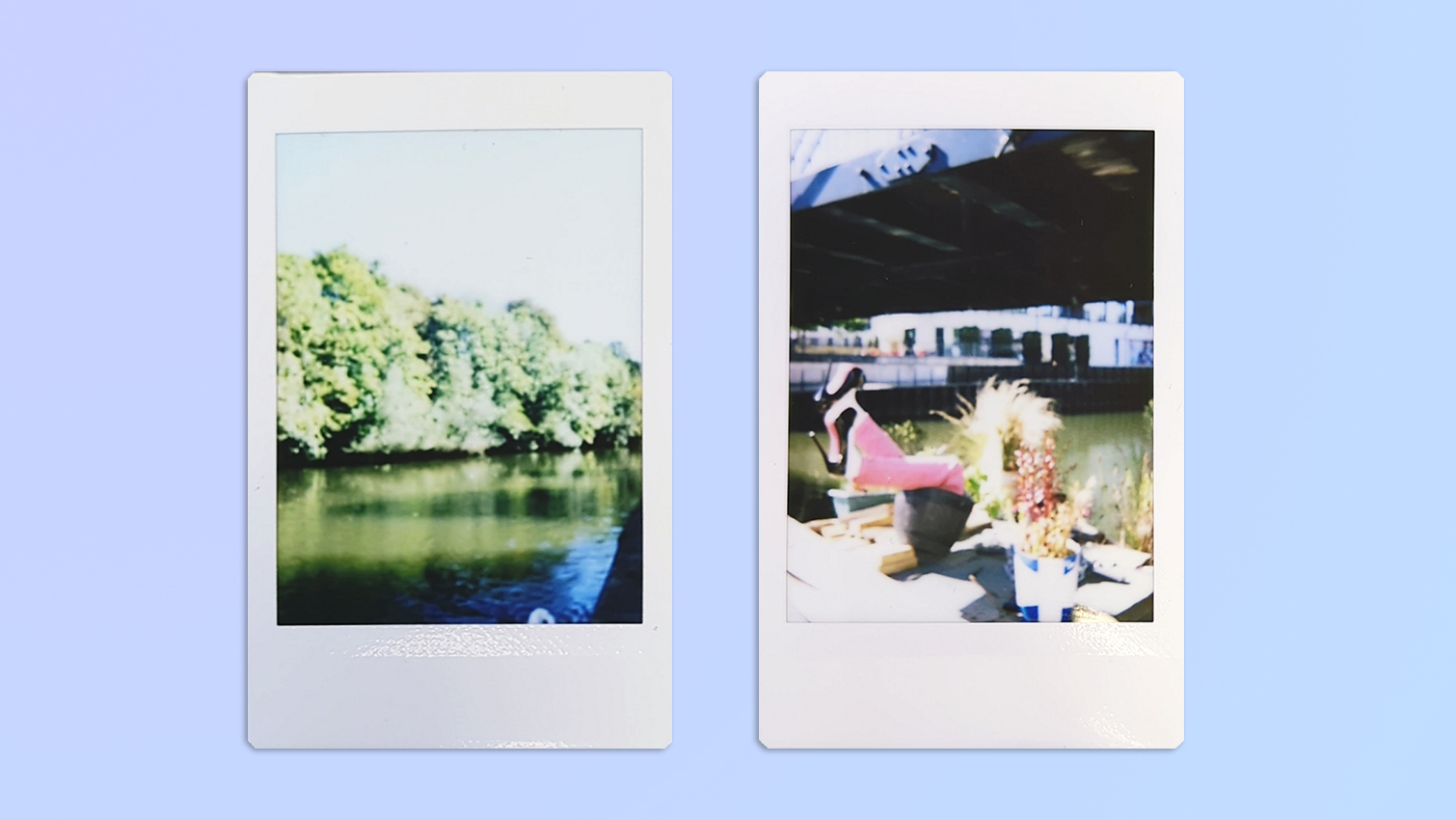
The camera does tend to over-expose images taken in very bright conditions, though, as can be seen in the first photo above. This isn’t a deal breaker but it’s something to keep in mind. The green trees look too bright and the print has turned the sky white instead of blue, as seen in other photos.
While focusing takes some trial and error, especially when multiple subjects are involved, the prints still turn out lovely, bright and detailed. In the second photo above, you can see that the camera struggled to focus on the mannequin’s legs, which I wanted to be the main subject. The resulting image is, therefore, blurry.
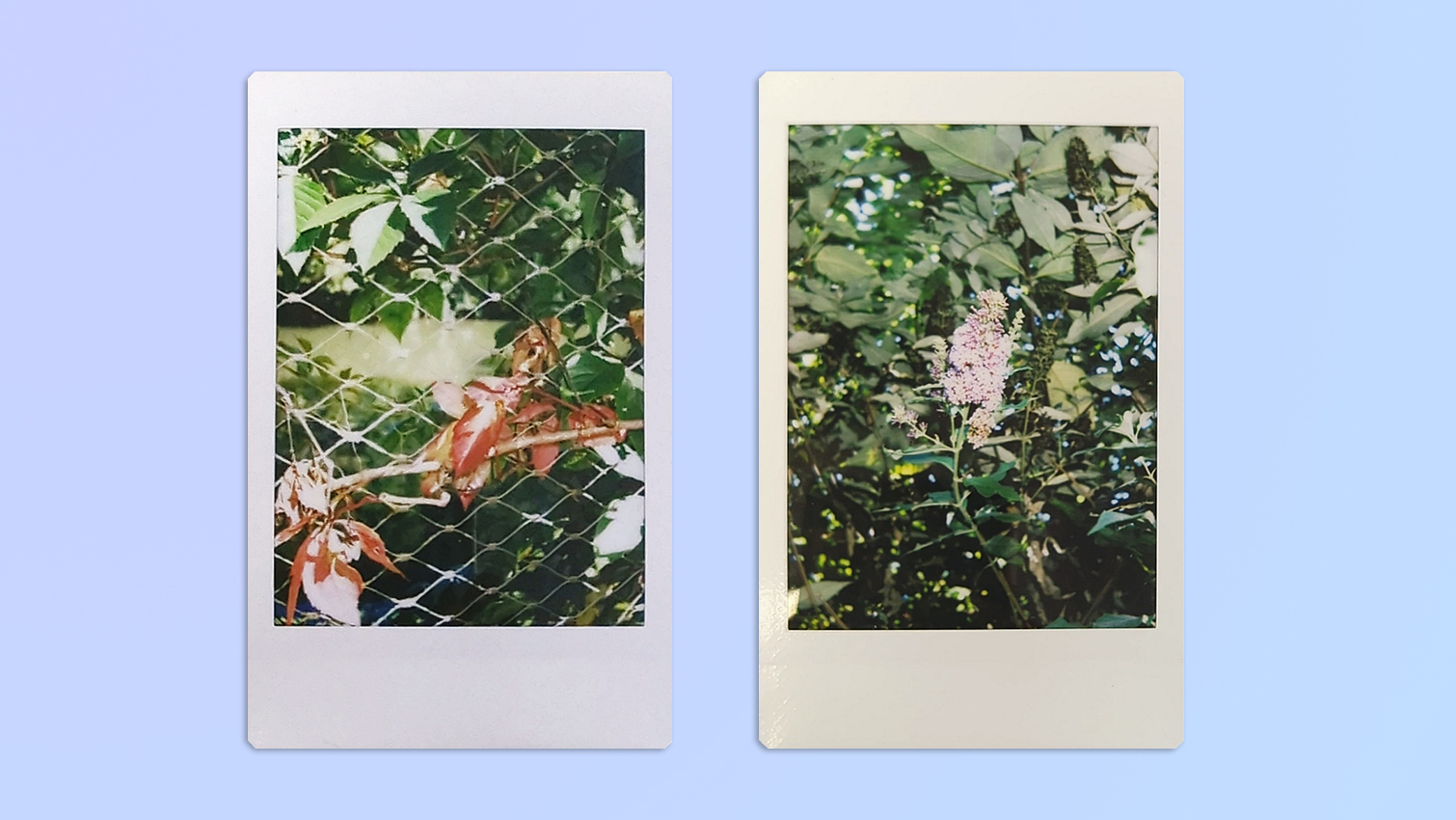
The Instax mini 12’s close-up mode works well too. It doesn’t take macro shots per se, but it helps to focus on a flower, for example. The two photos above were shot using this mode. In the first photo, the red leaves are the main focus but the entire shot itself is in focus. This is also the case with the second photo of the purple flowers. While the purple leans more towards white in the print, it demonstrates how well the close-up mode works.
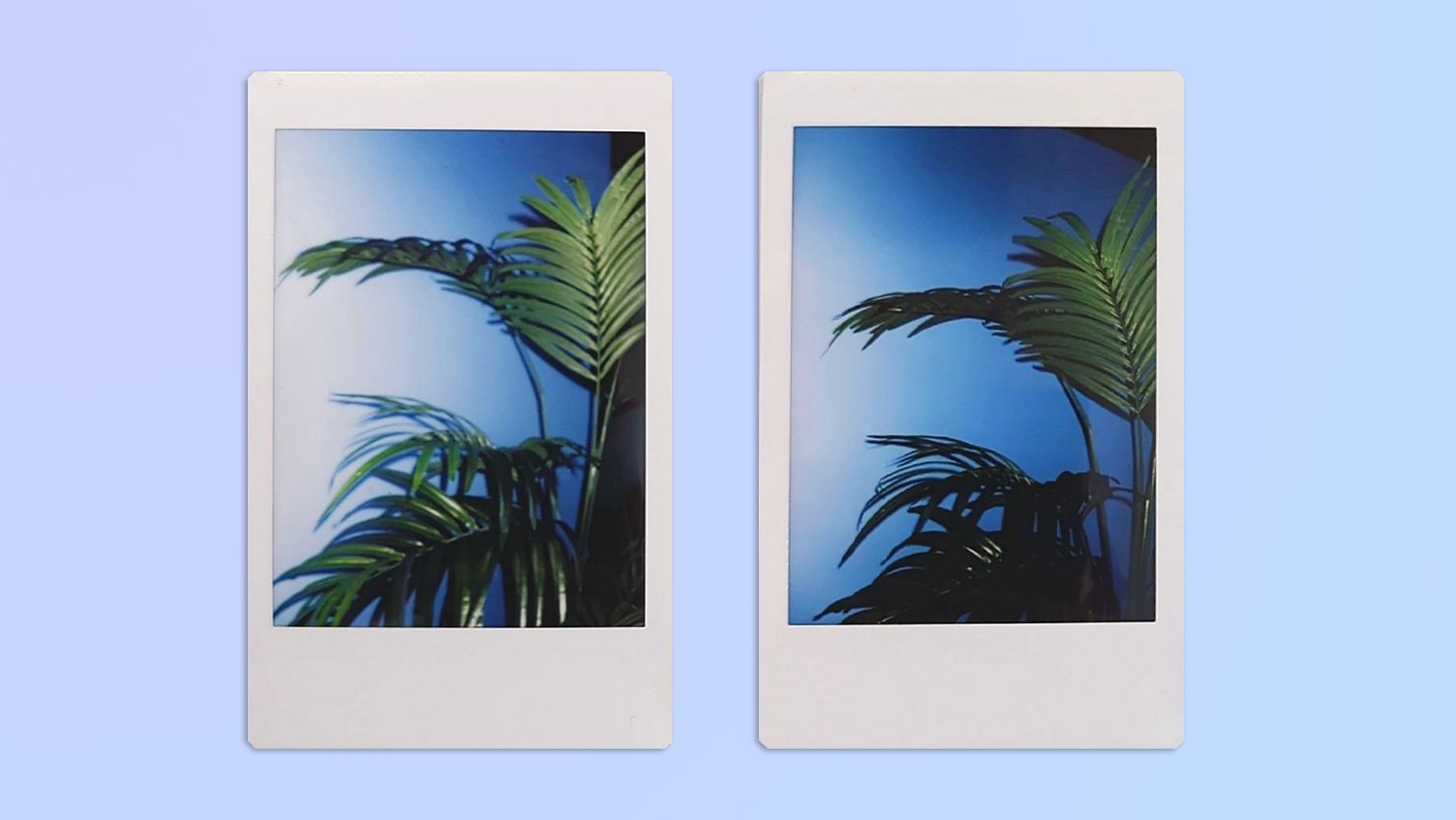
So how about low-light performance? Instant cameras rarely perform well in dimly lit environments. My first instant camera was an Instax mini 8 which didn’t do wonders in the dark, so I was looking forward to seeing if this had improved over eight years. And I’m glad to report that it has! The Instax mini 12 has an improved flash which automatically adjusts itself — you can’t manually turn it off. The first photo above was taken in a bright room with lights on, and the second was taken with the lights off and just the flash firing. Can you tell the difference? Me neither.

Similarly, selfies taken in the dark turn out detailed too. The selfie above was taken in a dark room with all the lights off. You can read the text on my sweater and even make out the symbols on my lanyard. Overall, the Instax mini 12’s shooting capabilities are fantastic.
Fujifilm Instax mini 12 review: App
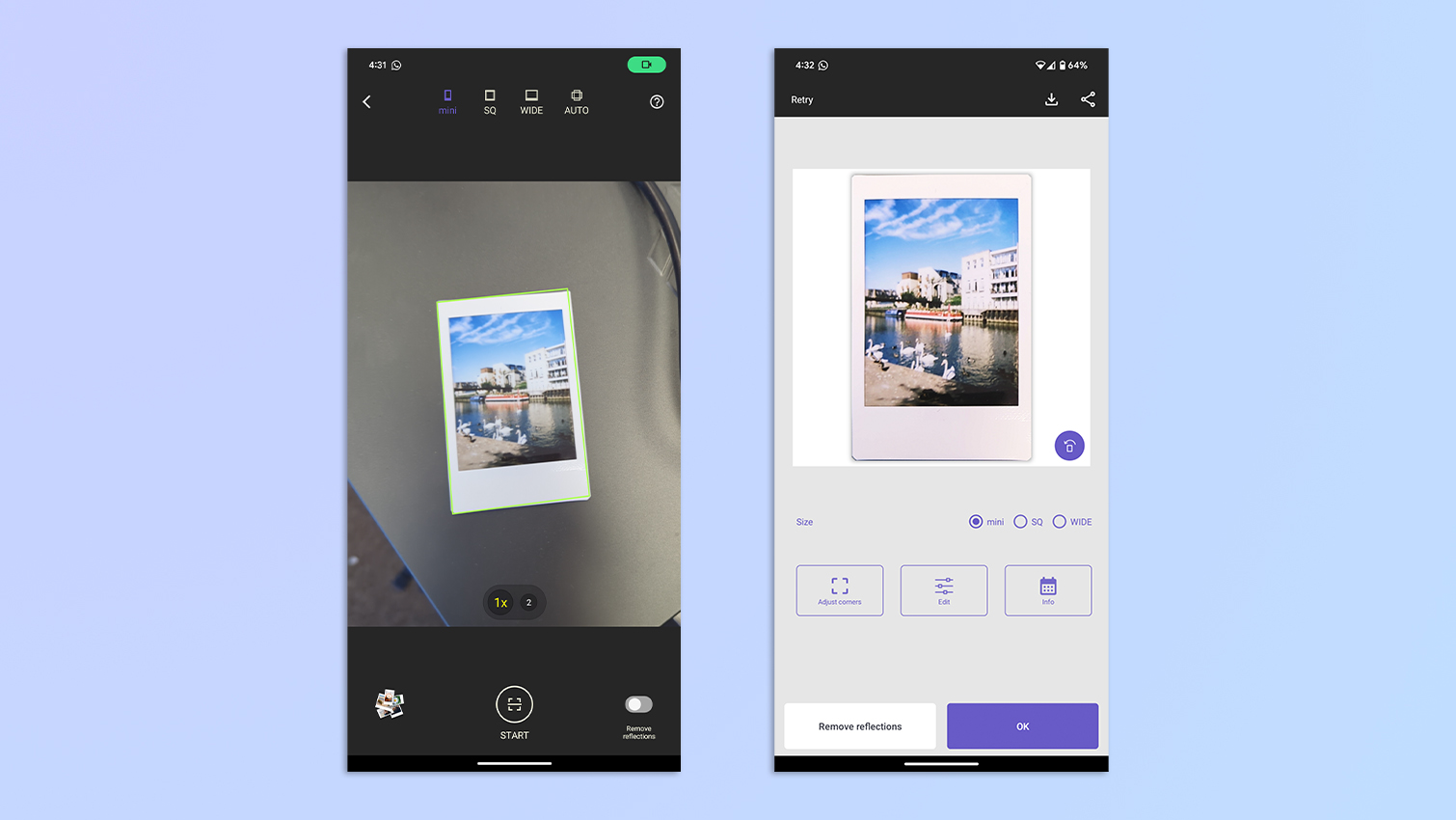
Want to share your Fujifilm Instax mini 12 prints on social media? Try the Instax UP! app on Android and iOS. The app is intuitive to use and you can easily scan your prints, edit the contrast, brightness, saturation and color temperature. There’s also a handy “remove reflections” feature which works really well. This way, you don’t have to worry about finding the right lighting to scan your prints.
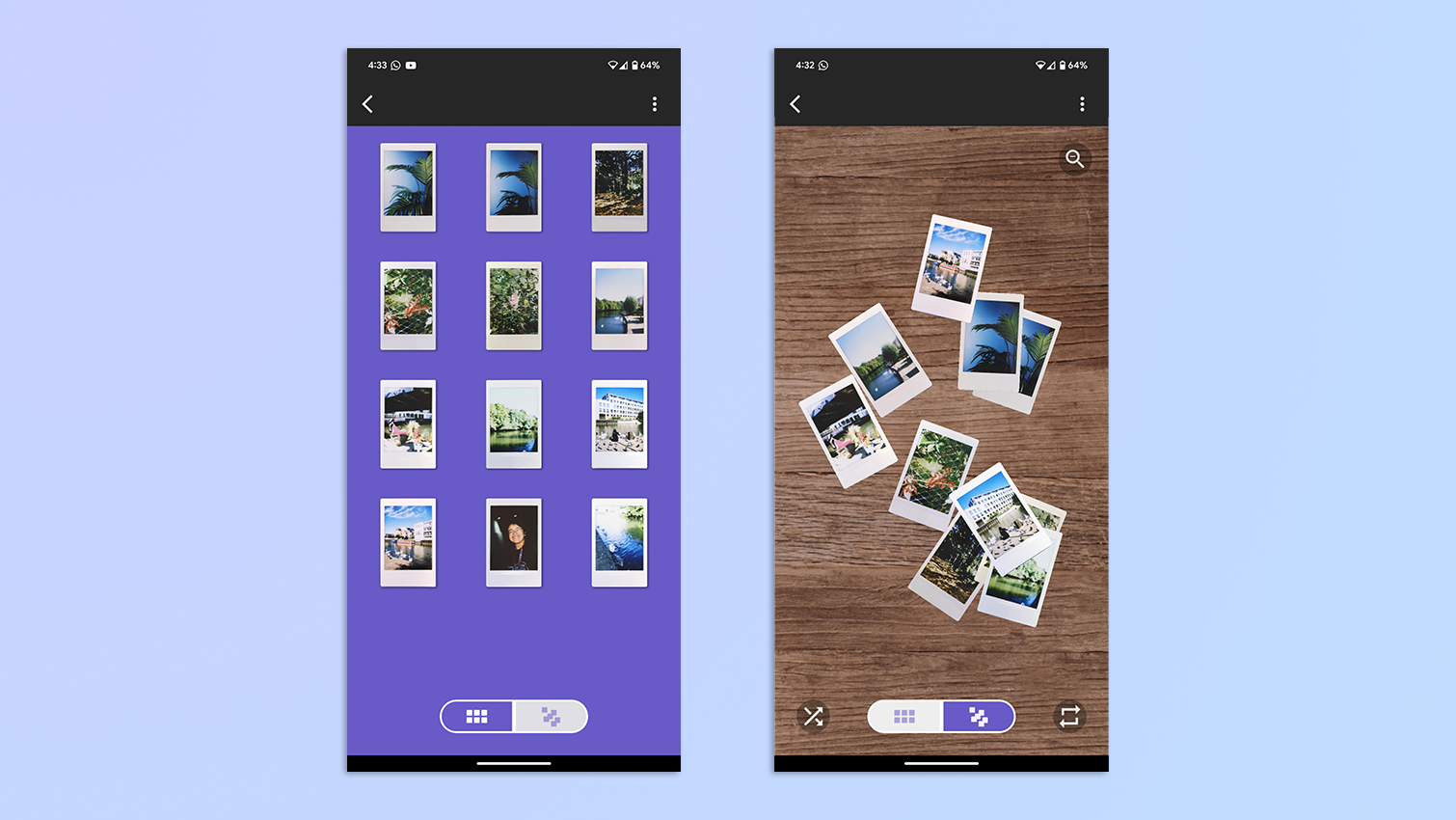
I also like that you can arrange your scanned prints to make them look like they’re on a wooden surface.
I don’t own a scanner and if you don’t either, the app is an excellent alternative. All the photos in this review were scanned using the Instax UP! app on my Google Pixel 7 Pro.
Fujifilm Instax mini 12 review: Film cost & yield
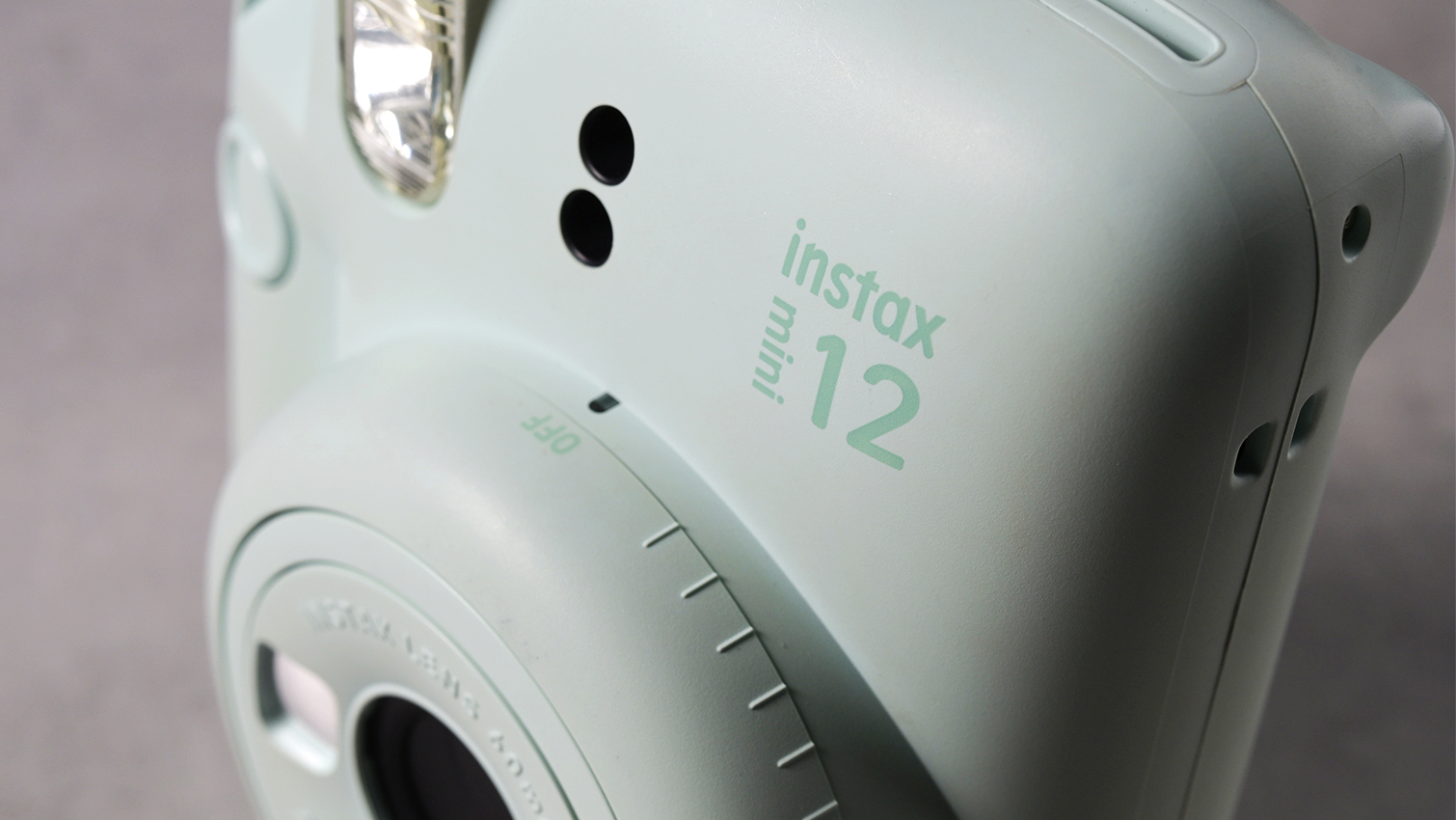
The Fujifilm Instax mini 12 is truly instant. It takes just under 90 seconds for prints to fully develop. Similar to other Instax mini cameras, such as the Instax mini LiPlay ($169), the Instax mini 12 uses Instax mini film which generally costs $14 / £14 per double film pack (20 pieces of film) — so you’re paying 75¢ per picture. This cost is similar to the film used by the Kodak Mini Shot 2 Retro. Instax mini film is also cheaper than Polaroid Go film, 16 pieces of which usually cost $19 / £18.
Fujifilm Instax mini 12 review: Battery life
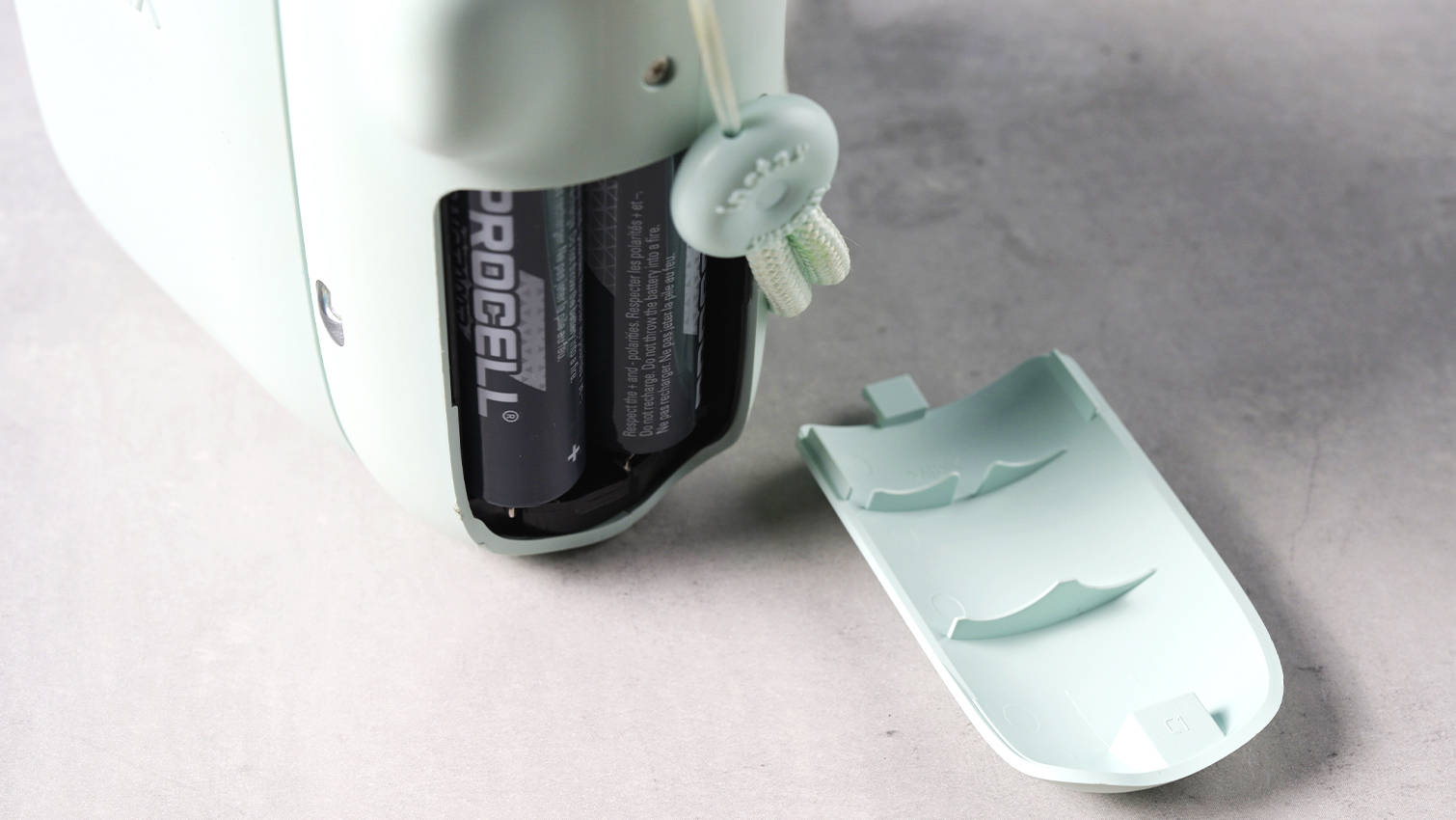
The Fujifilm Instax mini 12 uses two AA disposable batteries, which aren’t great for the environment but they provide a long battery life. Fujifilm claims that two batteries will last you for approximately 10 Instax mini film packs of 10 exposures each. I couldn’t drain the entire battery in my testing.
If disposable batteries put you off, consider the Polaroid Go Gen 2, which has a rechargeable Lithium-ion battery.
Fujifilm Instax mini 12 review: Verdict
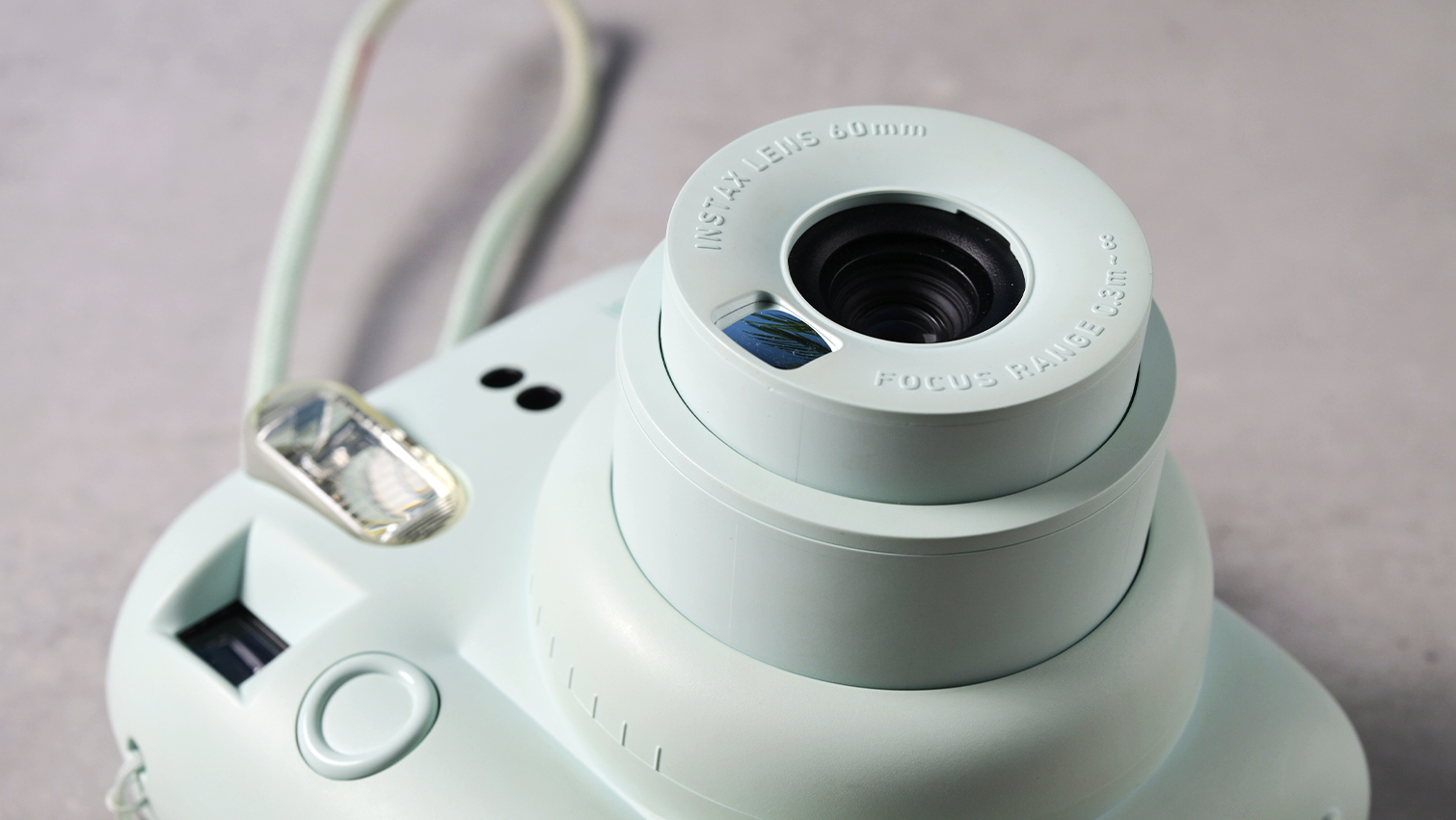
Talk about an absolute all-rounder! The Fujifilm Instax mini 12 impresses on a lot of fronts. It’s compact and portable, and it’s light enough to hold with just one hand. The camera is extremely easy to use as it houses just one button: the shutter button. Simply point and shoot and your print will be ready in under 90 seconds. The prints themselves turn out bright and detailed, but remember, the camera has a tendency to over expose images shot in very bright light.
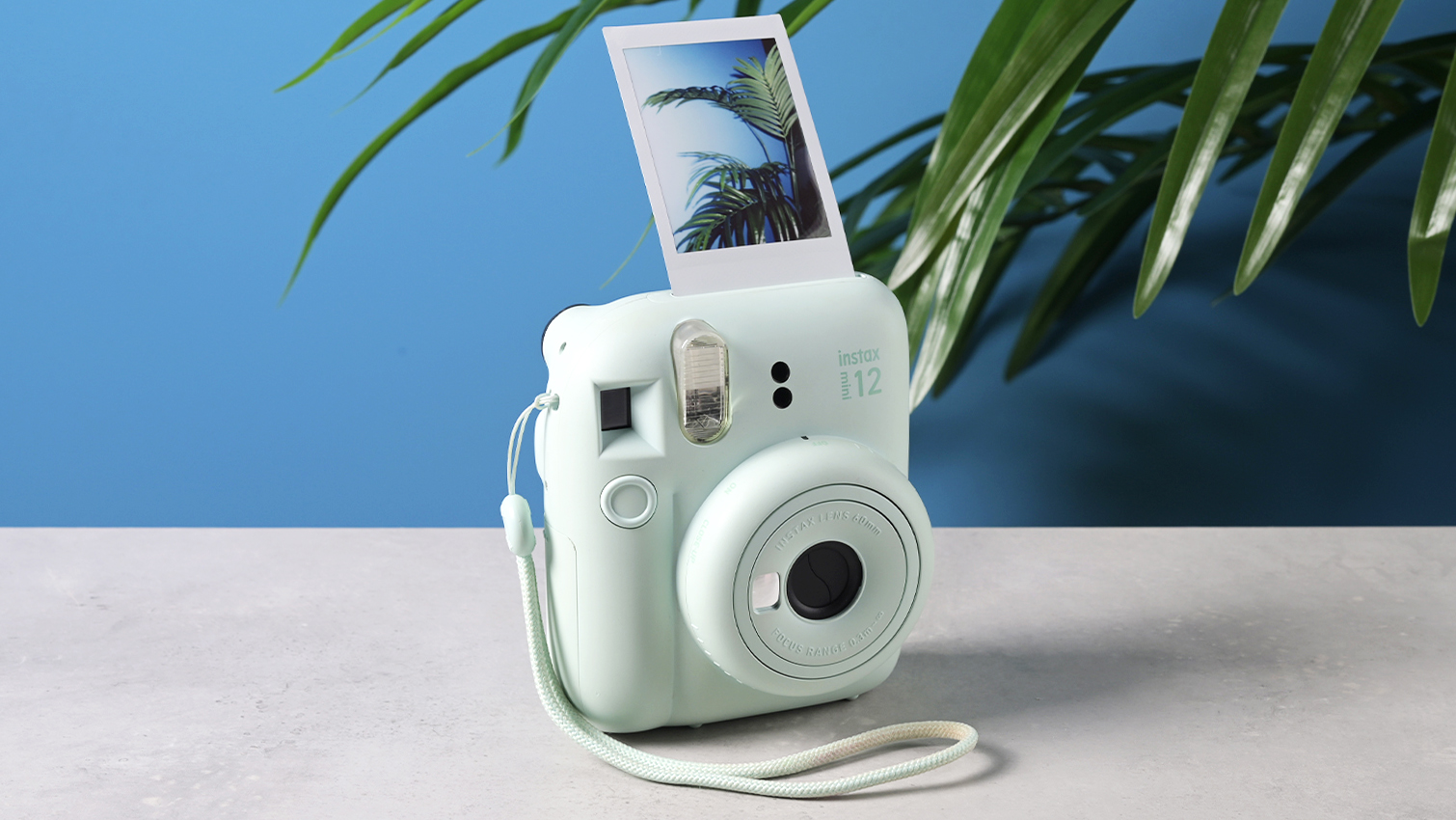
I’m also impressed by the Instax mini 12’s low-light performance. The flash automatically adjusts itself and illuminates most subjects just how you want it to. Shutter speed and exposure are adjusted automatically too, so anyone can use this camera — even those not familiar with the semantics of photography. But if you want more control over exposure, a self-timer and double exposures, you’ll have to spend more on a camera like the Instax mini 99 ($199).
If you want a no-frills, cutesy instant camera that adds a pop of color to your life, the Instax mini 12 is the one for you.

Nikita is a Staff Writer on the Reviews team at Tom's Guide. She's a lifelong gaming and photography enthusiast, always on the lookout for the latest tech. Having worked as a Sub Editor and Writer for Canon EMEA, she has interviewed photographers from all over the world and working in different genres. When she’s not working, Nikita can usually be found sinking hours into RPGs on her PS5, flying a drone (she's a licensed drone pilot), at a concert, or watching F1. Her work has appeared in several publications including Motor Sport Magazine, NME, Marriott Bonvoy, The Independent, and Metro.
